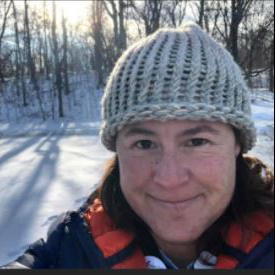Keystone Species Series: American Alligator
- Mar 25, 2021
What is the Keystone Species Series?
During this series we plan to highlight one animal each time to showcase the impact that even a single species can have on the surrounding environment. Just what IS a keystone species? “Keystone species are those which have an extremely high impact on a particular ecosystem relative to its population. Keystone species are also critical for the overall structure and function of an ecosystem, and influence which other types of plants and animals make up that ecosystem.” (www.biologydictionary.net)
A prime, timely example of the power of keystone species: the American Alligator and American Beaver
American Alligator, A Great American Success Story
Who doesn’t like a good comeback story?
Imagine that you are in a warm, almost tropical place. Maybe somewhere like the Ocala National Forest in central Florida. Picture yourself floating down the serene river in a canoe, passing all kinds of dense trees and shrubs. Birds everywhere. The sheer amount of life so dense, everything seems to be right in front of or next to you.
Look a few feet to the side of your boat. What’s that bump poking out of the water? Does that bump have eyes? Scales? A tail? Suddenly you are keenly aware of just how small this canoe is!
Wildlife moments like this one were very unlikely, almost impossible, as recently as the 1970’s. The American alligator was heavily hunted, almost to extinction by the mid-twentieth century. Habitat loss was also an issue for the alligator, as swamps were drained and communities built in their warm, southeastern home range. By 1967, the American alligator was placed on a protected species list that predated the Endangered Species Act of 1973. The “Class of 1967,” as the US Fish and Wildlife Service calls it, also included the bald eagle and grizzly bear. As a testament to both the value of protection and their own resilience, American alligators were considered fully recovered and removed from the Endangered Species list in 1987. This comeback gave the American alligator the distinction of being the first listed, but also the first de-listed and most quickly recovered animal in Endangered Species history. A true great American comeback, indeed!
So, what makes the American alligator a keystone species? Keystone species are often identified in part, if not in full, by their eating habits. High level predators can sometimes heavily modify their surroundings by their food consumption alone. The American alligator is a high level (apex) predator which consumes a LOT of other animals in great variety of abundance. Not particularly picky, alligators eat rodents, other reptiles, such as snakes and turtles, birds, basically anything they can catch and fit into that enormous mouth. Such prolific consumption does indeed have a large effect on the wildlife population and the makeup of the wetlands themselves where alligators live. However, the American alligator does also physically alter its wetland environment.
Alligators aren’t construction experts or major habitat builders. They’re more… habitat enhancers. Alligators create burrows, known as “alligator holes” or “gator holes.” These wetlands within the greater wetland environment create additional and more diverse habitats than what would be there on its own. Using feet, tail and snout, alligators dig into the wetland to create their gator holes. These holes help them cool off in the heat and serve as a space to nest and rear their young. (Yes, alligators are much more involved parents than most reptiles!) Many of these gator holes retain water in even the driest of dry spells, ensuring habitat for fish, turtles, wading birds, and many other water dependent animals. It doesn’t hurt that in turn, the alligator has a food source in these animals so close to home!
If you’re looking to learn more about a compelling and influential animal with a solid comeback story, look no further than the American alligator. It’s a lot of amazing, packed into the largest reptile in the United States!
WRITTEN BY: GIA GIAMMARINARO, CINCINNATI PARKS NATURALIST AT CALIFORNIA WOODS & BOB STAGGENBORG, NATURE GUYS PODCAST, ALL ABOUT ALLIGATORS

Gia Giammarinaro is Explore Nature’s lead naturalist at California Woods Nature Preserve. She has been with Cincinnati Parks for 14 years. Gia’s lifelong passion for nature became a vocational goal upon attending 6th Grade Camp, when she learned that you can hike all day and eat certain bark and flowers. For the last 20+ years, she has spent all of her work and some of her free time educating folks of all ages about the beauty, diversity, wonders and fun of nature. Her goal is to instill a sense of affinity with and curiosity about nature, so that conservation becomes natural to us all.

Bob Staggenborg is passionate about sharing his love of the natural world. After volunteering in a variety of nature positions Bob partnered with his friend and mentor Bill Creasey to create Nature Guys Podcast. Together they hosted and produced over 160 episodes in four years. After Bill lost his fight with cancer in August 2020 Bob is continuing Nature Guys with the help of a dedicated team of co-host naturalists. Nature Guys Podcasts connects people to the natural world with a unique blend of humor, storytelling and scientific knowledge.
